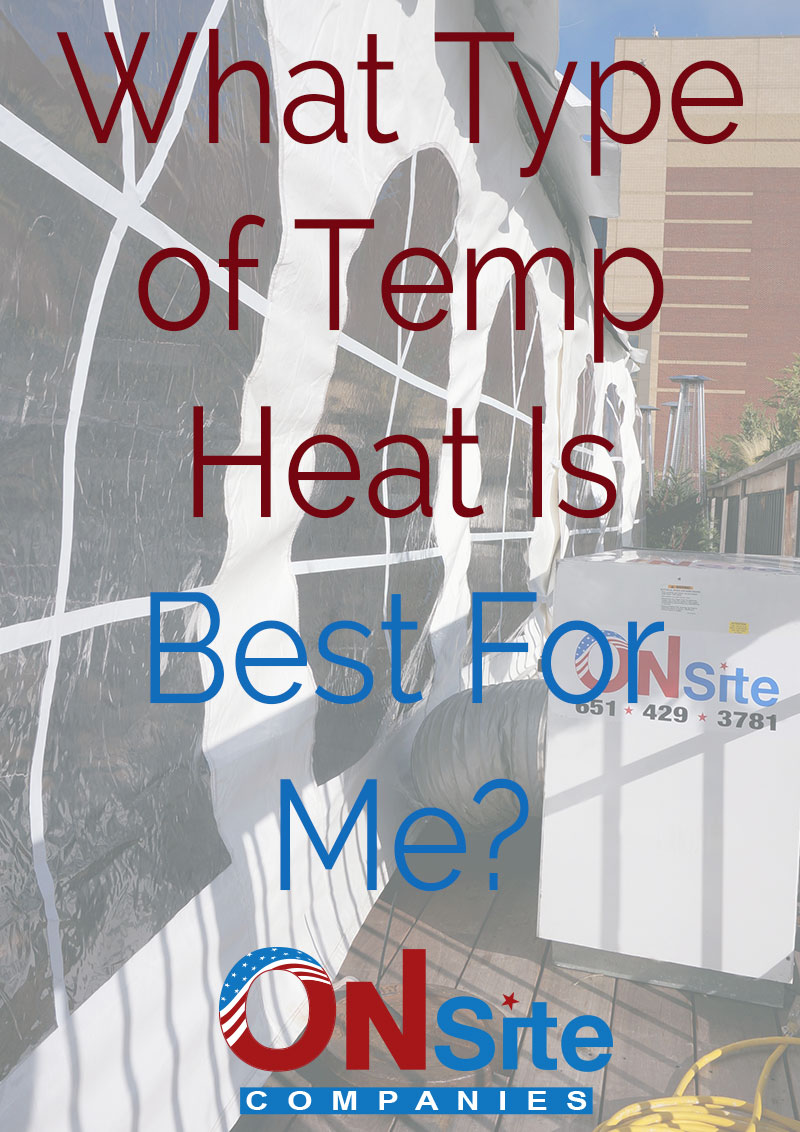When the cold temperatures come, your work doesn’t have to stop. There are a lot of ways you can continue your project with temporary heat that won’t just keep your workers warm, but also can keep concrete curing in an efficient way.

Two Heaters Enter, One Heater Leaves
For temporarily heating your workspace, you have two choices; direct fired or indirect fired heaters. Both types of heaters have their advantages and disadvantages that make them more or less appropriate for different projects.
The Direct (Fired) Approach
Direct fired heaters are very similar to a gas grill or stove. Essentially, the fuel is burned to provide heat. Air is directly forced through the flame directly to heat the air. Since the fuel is burned directly to heat the air, direct fired heaters are the most energy efficient choice.
Direct fired heaters are mechanically very simple devices and are easy to transport. Their high energy efficiency makes direct fired heaters very powerful, able to generate higher amounts of BTUS compared to similarly-sized indirect fired heaters.
Of course, nothing is perfect, and direct fired heaters have their own drawbacks as well. Direct fired heaters have strict ventilation requirements for use. Ventilation is important because direct fired heaters produce carbon monoxide as a byproduct of creating heat. Those same carbon byproducts can also mean a direct fired heater may not be allowed in some buildings or job sites. The carbon monoxide from direct fired heaters requires a minimum of 20% outside air to be introduced to the space. If you need to bring in outside air, you may also need air moving equipment.
Indirect Fired
Indirect fired heaters are most similar to how a furnace works in your home. A flame in a burn chamber warms a heat exchanger. The heater draws in cool air in two different chambers. The air passes over and around the heat exchanger to get warm. The main advantage of this system is the air warmed and discharged is clean and free of carbon dioxide. Since indirect fired heaters do not release carbon dioxide, they can be used in smaller spaces. Indirect fired heaters also have the advantage of having a thermostat.
The disadvantages to an indirect fired heater is it is less efficient than a direct fired heater. Fuel efficiency for an indirect fired heater is close to 80%. Indirect fired heaters also always require exhaust ventilation. The exhaust can be vented outside or you can duct the hot air to the inside. Indirect fired heaters also are larger than direct fired units, making them far less portable.
Which Should I Use?
It may not be easy for you to choose which type of heater is best for you. Usually, direct fired heaters are best for outdoor applications and sites and interior or tightly-sealed workspaces are best for indirect fired heaters. Direct fired heaters are also good for areas with limited insulation or areas that need large volumes of warm air. Indirect fired heaters are good for areas that have strict sanitation requirements such as healthcare facilities or food processing plants.
To get the right heater for your project, talk to our temporary heat experts now! Call us today at 800.210.8407! Our team will make sure you get a custom quote that is perfect for your needs.